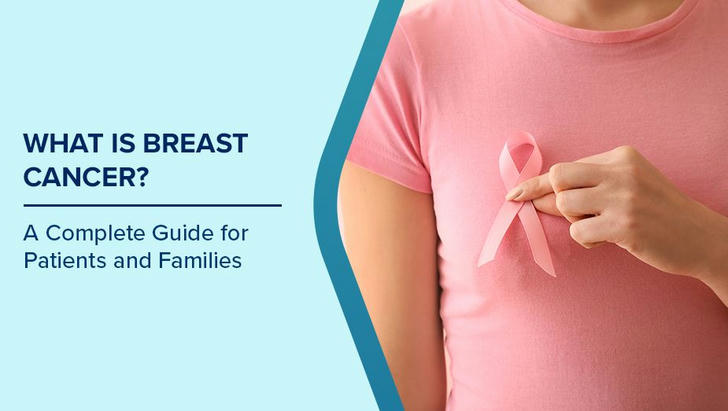How Long Can You Live with Breast Cancer? Real Survival Rates by Stage (2025 Data)
How long can you live with breast cancer?
That’s one of the most common — and most personal — questions patients and families ask. Breast cancer affects millions of people across the United States, but thanks to early detection and advanced treatments, survival rates continue to improve dramatically.

Understanding Breast Cancer Stages and Survival Rates
Breast cancer stages (I–IV) describe how far the disease has spread. Survival rates depend on tumor size, lymph node involvement, and metastasis (spread to other organs).
| Stage | Description | 5-Year Survival Rate (U.S.) | Outlook |
|---|---|---|---|
| Stage 1 | Small tumor, no lymph node spread | ≈99% | Excellent — often curable |
| Stage 2 | Larger tumor or few affected nodes | ≈93% | Highly treatable with combined therapy |
| Stage 3 | Regional spread, but not distant | ≈72% | Aggressive, but long-term survival possible |
| Stage 4 | Metastatic (distant organs) | ≈30% | Chronic but increasingly manageable |
Source: American Cancer Society (SEER 2024)
Stage 1 Breast Cancer: Nearly 100% Survival
Early detection saves lives.
Stage 1 breast cancer means the tumor is small and localized — usually ≤2 cm, with no lymph node involvement.
Treatment options: lumpectomy or mastectomy, radiation, and hormone therapy (if hormone receptor positive).
Typical outcome:
Most patients live a normal lifespan, with a near-100% 5-year survival rate. Many never experience recurrence.
Stage 2: Still Highly Curable
Stage 2 breast cancer indicates slight tumor growth or limited node spread.
Common treatments: surgery, radiation, chemotherapy, and targeted therapy (for HER2-positive tumors).
Survival rate: about 93%, with many achieving long-term remission.
Personalized medicine continues to boost survival — especially for hormone receptor–positive cancers.
Stage 3: Locally Advanced but Treatable
Stage 3 cancers are more complex, but not hopeless.
They often respond to aggressive multimodal therapy — combining chemo, surgery, and radiation.
Average 5-year survival: around 72%, and improving as immunotherapies and biologics advance.
Encouraging note: many patients today live 10+ years post-diagnosis with consistent follow-up care.
Stage 4 (Metastatic) Breast Cancer: Living Longer Than Ever
Stage 4 means breast cancer has spread to other organs, such as bones, lungs, or liver.
It’s not curable, but it’s increasingly treatable as a chronic condition.
Median survival: now ranges from 3 to 7 years, and many people exceed a decade with targeted therapies.
Recent breakthroughs:
CDK4/6 inhibitors
HER2-targeted drugs (trastuzumab, pertuzumab)
Immunotherapies for triple-negative breast cancer
These innovations have turned metastatic breast cancer into a manageable, long-term condition for many.
Key Factors Affecting Life Expectancy
| Factor | Impact on Prognosis | Example |
|---|---|---|
| Cancer subtype | Determines treatment response | HER2-positive responds to targeted therapy |
| Early detection | Improves survival dramatically | Routine mammograms detect Stage 1 disease |
| Treatment plan | Personalized care extends survival | Combining surgery + targeted therapy |
| Lifestyle & follow-up | Reduces recurrence risk | Exercise, nutrition, and regular checkups |
Updated 2025 Breast Cancer Survival Chart
| Stage | 5-Year Survival Rate | 10-Year Survival Rate (Est.) | Typical Outlook (2025) |
|---|---|---|---|
| Stage 1 | 99% | 96% | Often cured |
| Stage 2 | 93% | 88% | Excellent prognosis |
| Stage 3 | 72% | 60% | Long-term survival possible |
| Stage 4 | 30% | 20% | Chronic disease management |
Living Beyond Diagnosis: Hope and Progress
Today, more than 4 million breast cancer survivors live in the U.S. — the highest number ever recorded.
Ongoing breakthroughs in early screening, gene testing (BRCA1/2), and personalized medicine continue to extend survival.
Key takeaways:
Early detection remains the strongest predictor of survival.
Even advanced stages are increasingly manageable.
Quality of life and emotional well-being matter as much as treatment itself.
Conclusion: Survival Is Rising — and So Is Hope
Breast cancer no longer defines life expectancy the way it once did.
With proper screening, modern therapy, and continued research, survival rates will only improve.
